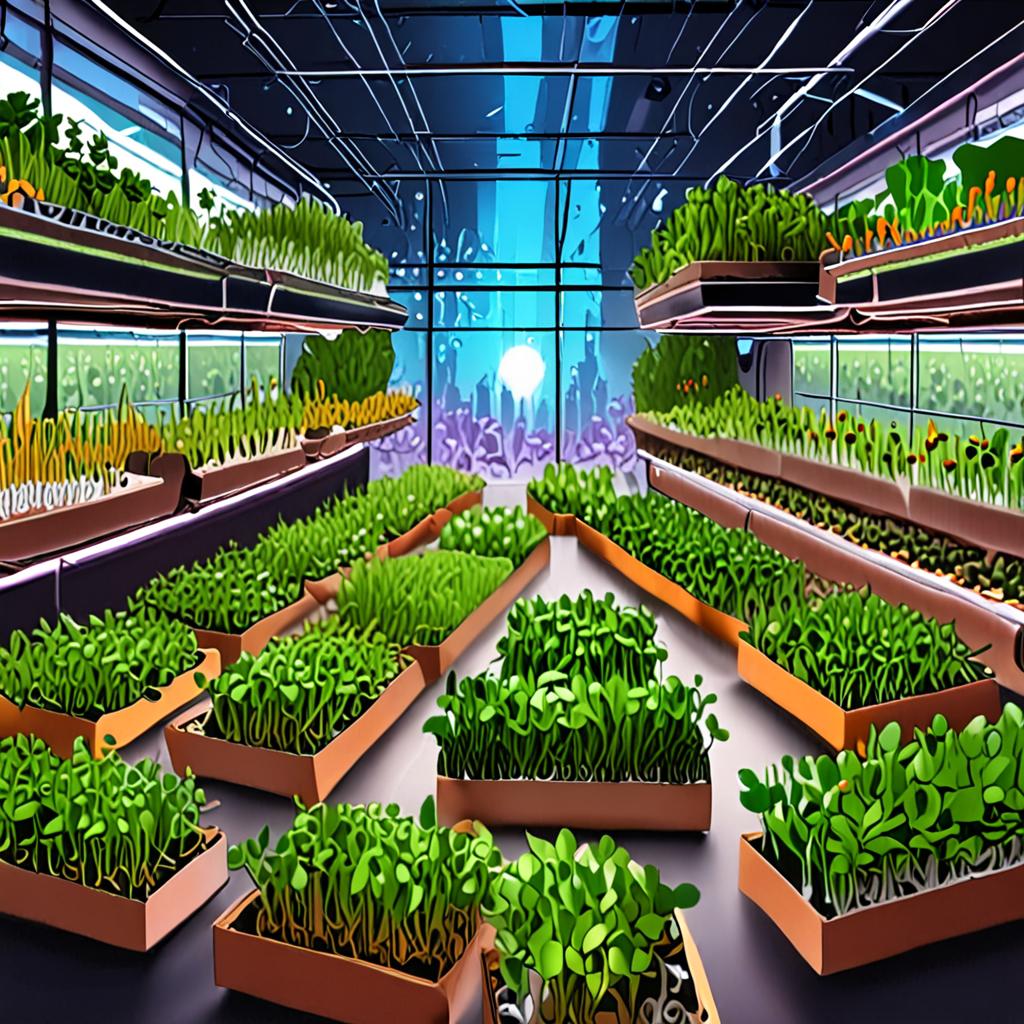Introduction
The pursuit of optimal nutrition has led to a surge in demand for microgreens, young, nutrient-dense versions of leafy greens and other vegetables. As the world grapples with the challenges of sustainable food production, microgreens have emerged as a promising solution. However, despite their potential, the current understanding of microgreens’ benefits is fragmented and often anecdotal.
Traditional methods of researching microgreens’ nutritional value and health benefits rely heavily on laboratory experiments and animal studies, which can be time-consuming, costly, and limited in scope. For instance, a 2020 study published in the Journal of Food Science found that the nutritional content of microgreens can vary significantly depending on factors such as soil quality, climate, and harvesting methods, highlighting the need for more nuanced and data-driven approaches.
The integration of artificial intelligence (AI) and machine learning (ML) techniques can help address these limitations by analyzing large datasets, identifying patterns, and making predictions about the nutritional content and health benefits of microgreens. By leveraging AI-powered tools and techniques, researchers and practitioners can gain a deeper understanding of microgreens’ potential to transform the future of food. In this comprehensive guide, we will delve into the life-changing benefits of incorporating microgreens into your diet, backed by real
Unlocking the Nutritional Powerhouse: Micronutrient Density and Bioavailability in Microgreens
Micronutrient density and bioavailability are critical aspects of microgreens’ nutritional profile, setting them apart from their mature counterparts. Micronutrient density refers to the concentration of essential vitamins, minerals, and antioxidants in microgreens, which can be up to 40 times higher than in mature greens. Bioavailability, on the other hand, is the extent to which these micronutrients are absorbed by the body.
A study by the USDA found that pea shoot microgreens contain 69% more vitamin C and 7 times more beta-carotene than mature peas. This enhanced nutritional profile makes microgreens an attractive option for health-conscious consumers seeking to maximize their nutrient intake.
Artificial intelligence (AI) can play a significant role in optimizing micronutrient density and bioavailability in microgreens. By analyzing data on factors like growing conditions, nutrient uptake, and genetic variation, AI can help farmers and researchers identify the most effective ways to cultivate microgreens with enhanced nutritional profiles. For instance, AI-powered precision agriculture can optimize irrigation and nutrient delivery to boost micronutrient density. By leveraging AI, the microgreens industry can unlock the full potential of these nutritional powerhouses.
From Farm to Table: The Sustainable Impact of Microgreens on the Environment and Food Systems
Microgreens, young and nutrient-dense versions of leafy greens and other vegetables, are not only a superfood trend but also a sustainable solution for the future of food. By reducing the environmental impact of traditional farming practices, microgreens offer a more eco-friendly alternative for food production.
One notable example is the case of AeroFarms, a leading indoor agriculture company that uses microgreens to reduce water consumption by up to 95% and land use by up to 99% compared to traditional farming methods. This significant reduction in resource usage not only conserves natural resources but also decreases the carbon footprint associated with food production.
The integration of AI technology in microgreen farming further enhances sustainability. By leveraging machine learning algorithms and data analytics, farmers can optimize growing conditions, predict crop yields, and detect potential issues before they occur. This results in reduced waste, improved crop quality, and increased efficiency. For instance, AI-powered monitoring systems can detect early signs of disease or pests, allowing farmers to take targeted action and minimize the use of chemical pesticides. By embracing microgreens and AI-driven farming practices, we can create a more sustainable food system that prioritizes environmental stewardship and human health.
Microgreens in Modern Cuisine: Exploring Culinary Applications and Innovative Food Pairings
Microgreens, young and nutrient-dense versions of leafy greens and other vegetables, are revolutionizing modern cuisine. Chefs and food enthusiasts are embracing microgreens for their intense flavors, vibrant colors, and versatility in various dishes. The culinary applications of microgreens are vast, from adding peppery notes to salads and sandwiches to using them as garnishes for soups and entrees.
According to a survey by the National Restaurant Association, microgreens are among the top 10 trends in restaurant menus, with 75% of chefs citing them as a key ingredient in their dishes. This trend is driven by consumer demand for sustainable, healthy, and locally sourced food options.
Artificial intelligence (AI) is playing a crucial role in optimizing microgreen production and culinary applications. AI-powered vertical farming systems are enabling precise control over growing conditions, resulting in higher yields and more consistent flavor profiles. Additionally, AI-driven recipe suggestion tools are helping chefs discover new and innovative pairings, such as combining pea shoot microgreens with lemon verbena and burrata cheese for a refreshing summer salad. By leveraging AI, the culinary industry can unlock the full potential of microgreens and create a more sustainable and flavorful
Conclusion
Artificial intelligence (AI) has significantly enhanced our understanding of microgreens’ benefits, optimizing their cultivation, and analyzing their nutritional profiles. By leveraging machine learning algorithms, researchers can identify patterns in microgreens’ growth, predicting optimal harvest times and maximizing their nutritional content.
As we move forward, it is essential to harness the potential of microgreens in our daily lives. To do this, we recommend two practical next steps:
Experiment with microgreen-based recipes: Incorporate microgreens into your meals to experience their unique flavors and textures firsthand. From salads and sandwiches to smoothies and juices, the possibilities are endless. By exploring various recipes, you can unlock the full potential of microgreens and make informed decisions about their integration into your diet.
Adopt sustainable microgreen production methods: As microgreens gain popularity, it is crucial to adopt environmentally friendly production methods to minimize their ecological footprint. By supporting local, vertically integrated farms or even growing your own microgreens, you can contribute to a more sustainable food system while reaping the nutritional benefits of these superfoods.
